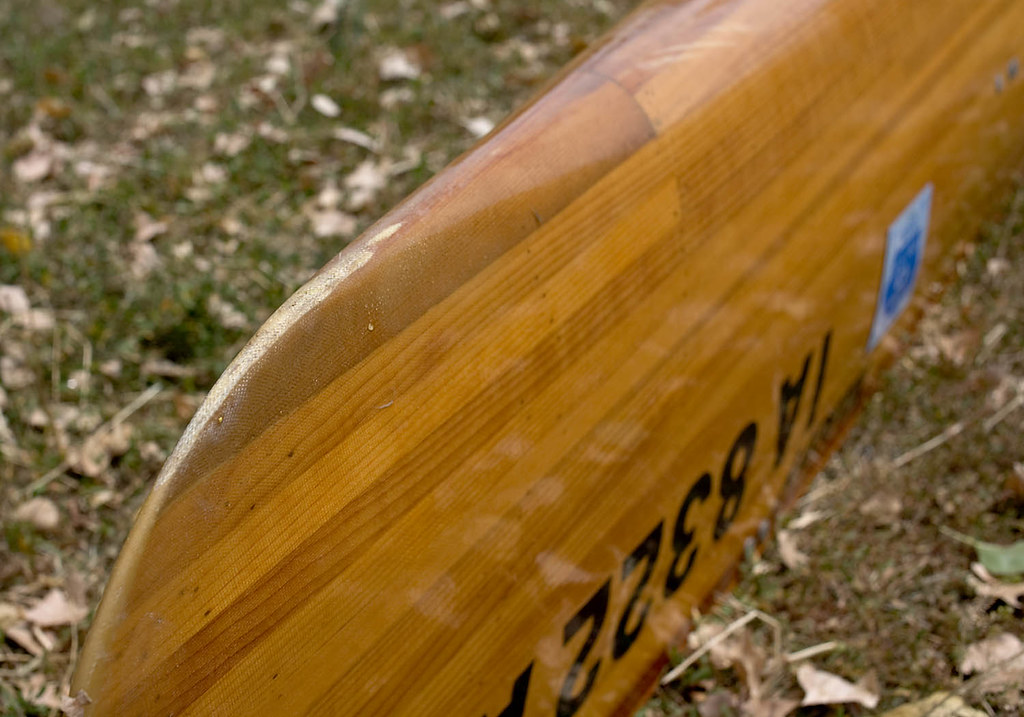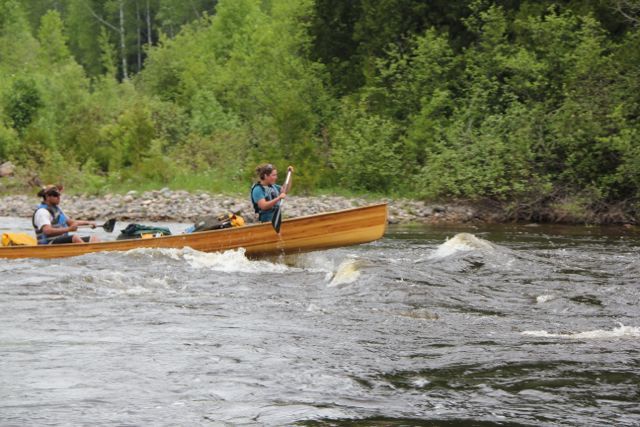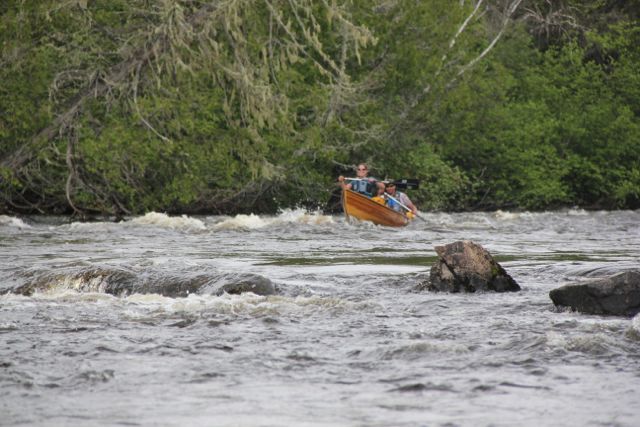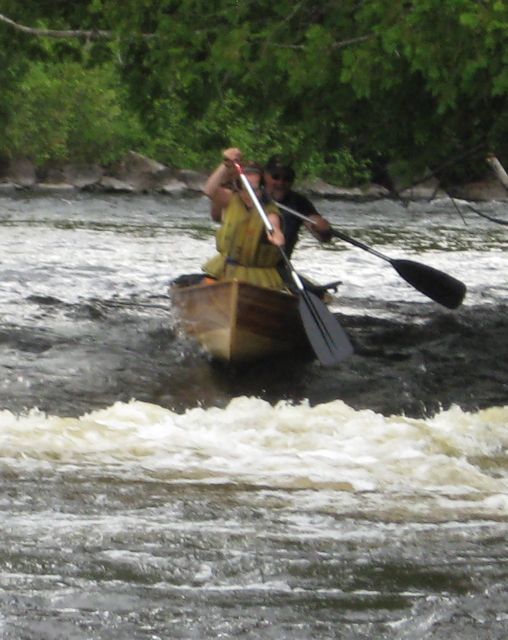While interesting I'm not sure how much these kinds of tests equate to use in the real world. I'm not an engineer but I believe a curvature, even slight, increases the strength of a given area. Additionally, when a boat strikes a rock the boat is not immobile even under pressure from moving waters.
I build primarily with 1/4 inch strips as I like the additional meat for fairing and I use commercial B&C stock where that thickness is much more readily available.
The hardest hit I've ever taken in a cedar strip was in my first kayak - a low deck Guillemot Night Heron. The aforementioned size strips with 6 oz cloth in and out on the hull, an extra layer on the football.
I was coming down the Lewis river channel in Yellowstone, an area featuring volcanic rock and lots of it. I was taking pictures as I came down the channel traveling about 4 mph. Dodging surface rocks and working a DSLR was probably not one of my better decisions and it wasn't long until I struck a rock hard while looking through the camera. The impact felt like a minor car crash with the kayak stopped dead to rights in a diagonal broach. The camera went airborne and I was almost completely ejected from the cockpit even though wearing a full neo skirt.
The boat wasn't holed as expected but had a nasty glass bruise and light dent. No water ingress and I repaired the boat easily upon my return home.
Two years later and in the same boat, I took another hard mix up on Yellowstone lake as I was coming around the aptly named Breeze Point into West Thumb. A storm was brewing and they're to be taken seriously on that lake. I was 5 miles away from my take out and thought I could push on through the wind but coming around the point I smacked right into the brunt of it. Got rolled a couple o' times and then washed into some large protruding rock formations hard enough that I ended up with a few broken toes before it was over. The storm turned into one of the biggies with 50-60 mph winds causing me to spend a few hours holed up as it raged. The boat was sound and I paddled it back that evening on an eerily calm lake after the storm. Again the boat was repaired easily at home cutting out 6 or 7 impact bruises and glassing in some patches. No wood replacement was necessary either time.
I don't have any experience with the lightweight builds like Alan or Stripperguy but I'd like to do one someday. I was one of those who always thought strippers were more furniture than trippers but I've certainly changed my mind over the last decade. I don't beat my boats purposely but I don't treat them like a fragile weenie either. Well, my BlackLite Northstar Magic gets the kids glove treatment but that's because I'll never again convince myself to drop that kind of coin on a canoe





